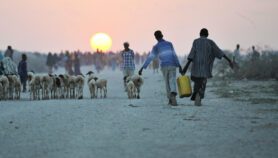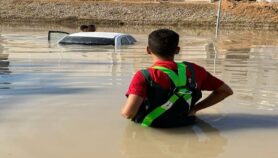By: Sharon Davis
Send to a friend
The details you provide on this page will not be used to send unsolicited email, and will not be sold to a 3rd party. See privacy policy.
Scientists have developed a mathematical model to guide policymakers in making decisions about relocating people within their own countries as a way of adapting to climate change.
Low-lying areas in many developing countries could be vulnerable to flooding from rising sea levels and arid areas could become uninhabitable as water becomes scarcer — meaning that millions of people will need to migrate.
The model, described in the International Journal of Mathematics in Operational Research, can be used to calculate how many people an area could support in the event of it becoming less habitable; how many people could remain and implement adaptation techniques and how many people another area in the country could absorb.
It also estimates the economic impact of various relocation scenarios and the cost of relocation and adaptation assess whether it is economically viable.
The model can take into account people’s preferences about relocation — something that the researchers hope will be used by policymakers.
Sajjad Zahir, professor of decision sciences and information systems at the University of Lethbridge, Canada, and lead author of the research, says that planning the relocation of people because of climate change is a new field of research.
As a result, the researchers do not yet have any real-world data with which to test the model — but they plan to expand it to incorporate conflict resolution mechanisms and better take into account people’s preferences, says Zahir.
Rebecca Maserumule, a senior researcher in natural resources and the environment at the Council for Scientific and Industrial Research, South Africa, says the model takes a "proactive stance" on dealing with climate change migration.
She adds that the model will enable governments to relocate people in high-risk areas without affecting the economic stability of the region and allow those that stay to use environmental adaptation strategies such as elevated housing and barrier walls in flood-prone areas.
But she says that more work needs to be done to make the model applicable to different countries and cultures.
Link to abstract in the International Journal of Mathematics in Operational Research
References
International Journal of Mathematics in Operational Research 1, 326 (2009)













